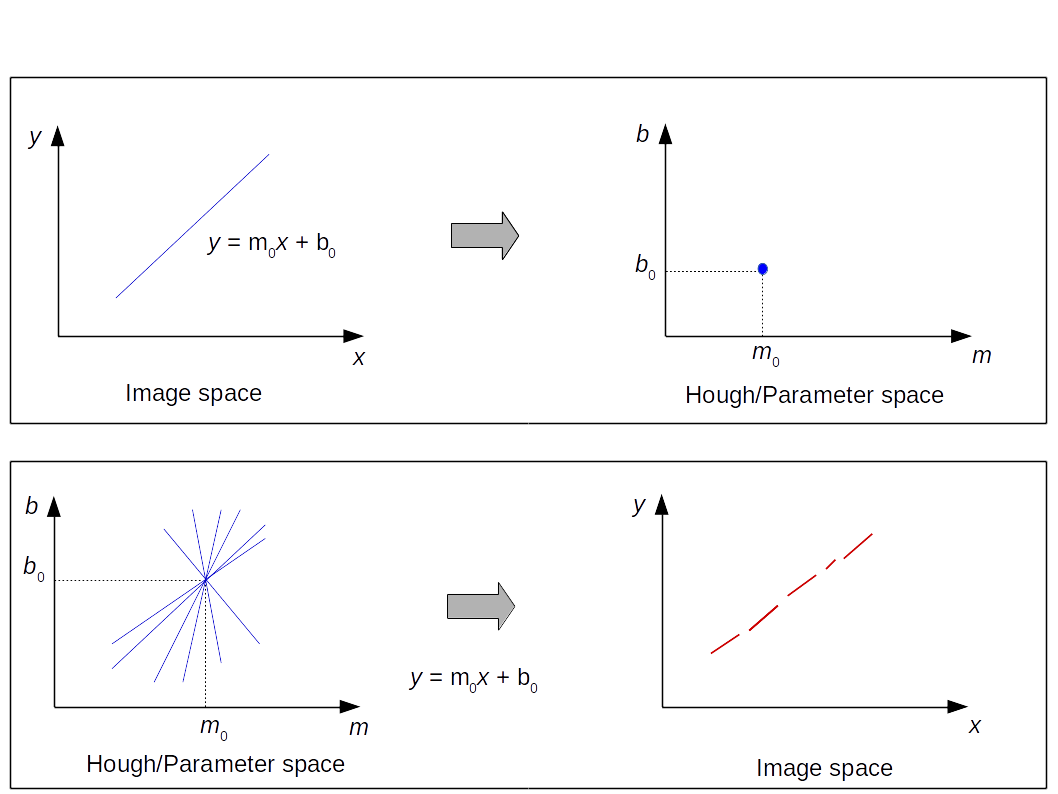


The Hough method was to transform each bubble point $(x_0, y_0)$, represented by a pixel in the image, and the set of all possible lines $y_0 = sx_0 + d$ passing through it, into a line in a parameter space $(s, d)$ whose variable were the slope $s$ and the intercept $d$ with the y axis. Another approach was suggested in 1962 by Paul Hough, while trying to automatically determine the trajectories of charged particles crossing a bubble chamber. However, the computational complexity of such an approach would be proportional to the square of the number of edge pixels.

The problem can be solved by exhaustively by testing all the pixels in the edge regions. The most common shape that can be found in pictures, especially those containing man-made objects, is a line. This further step, after the edge detection, is called edge linking and consists of connecting together the pixels that are real members of an edge of a certain shape, avoiding the pixels that have been included due to noise or blurring. Often what we want to know, and what we want a computer to detect, is the shape, namely the analytical description of the object that has been revealed by the edge detector, such as the slope and intersect of a line. These regions contain pixels that are members of real edges but also pixels that are due to noise or blurring. In digital image processing different filters are available that can detect edges on an image, namely regions in which the intensity value of a set of pixels along a certain direction changes steeply.
#Hough transform code#
A Jupyter notebook with the Python code used to implement the functions discussed in the post and to derive the pictures shown here is available on my GitHub repository. In this post I will introduce briefly the theory behind the Hough transform, and then I will present two examples, one with images containing simple geometrical shapes, to better explain the idea, and one with an image containing man-made objects. The Hough transform can be used after an image has been pre-processed by an edge detector to find the edges that reveal the border of objects or regions inside it. The Hough transform is used in digital image processing and computer vision to find geometrical shapes such as lines, circles or ellipses, common in images that contain man-made objects.


 0 kommentar(er)
0 kommentar(er)
